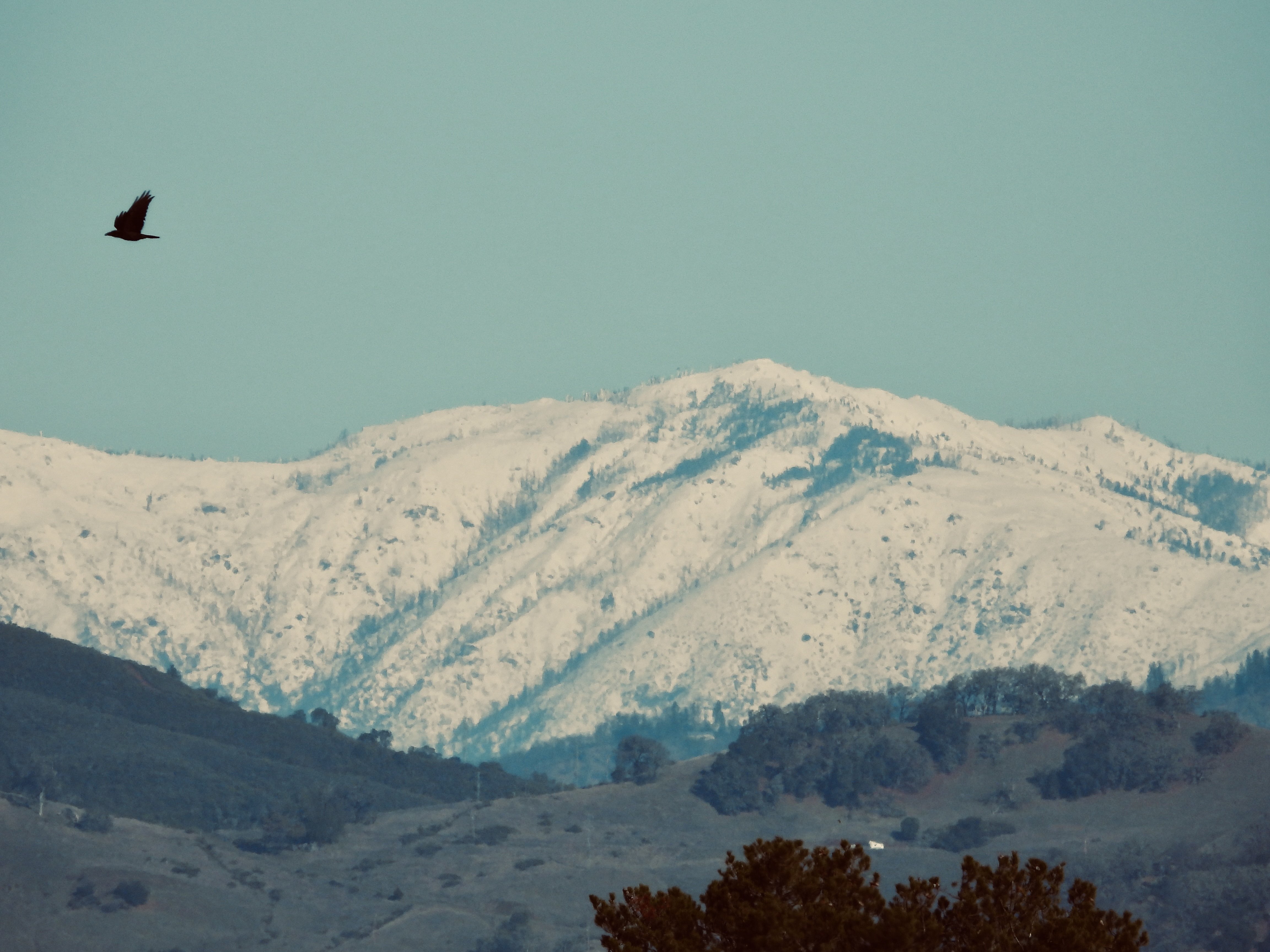The following is the Winter 2023 newsletter regarding the Potter Valley Project composed and circulated by the Lake Pillsbury Alliance. This non-project works to preserve Lake Pillsbury. Our publication of their newsletter is not an endorsement of their mission. We share to provide a platform to the many perspectives and voices within our community.

Hi Folks,
We are writing to give you an update on the Potter Valley Project and to recap the actions that took place in 2022. We will also share a little bit about our work to raise public awareness of the regional importance of Lake Pillsbury.
Surrender
On July 29, 2022 the Federal Energy Regulatory Commission (FERC) accepted PG&E’s proposed 30-month timeline to file a surrender application and decommissioning plan for the Potter Valley Project. PG&E’s deadline for filing is January 2025. We can expect concentrated periods of outreach to stakeholders throughout the surrender process and multiple opportunities for public comments. Thus far, PG&E has not disclosed which stakeholder groups will be contacted.
Consideration to reopen the hydropower license for the Potter Valley Project
On March 16, 2022 the National Marine Fisheries Service (NMFS) filed a request with FERC to reopen the hydropower license for the Potter Valley Project to incorporate eight new interim measures to support protected endangered salmonids while the future of the PVP is being determined.
On August 15, 2022 FERC requested NMFS to provide additional information to support the points it raised in their March 16, 2022 letter.
On October 13, 2022 NMFS responded to FERC’s request with additional information and reiterated the need for FERC to consider reopening the license.
On November `6, 2022 FERC announced that it is considering reopening the PVP hydropower license and invited interested parties to submit motions to intervene and public comments through December 16, 2022.
One of the interim measures proposed by NMFS is to develop and implement a reservoir storage-based cold water pool management strategy for Lake Pillsbury, targeting suitable summer water temperatures for salmonids below Scott Dam while managing the water storage demands in the Russian River. To review all of the interim measures proposed by NMFS, click here.
PG&E Intends to Transfer Potter Valley Project to subsidiary LLC – What will this could mean for Equipment Repairs and Water Diversions
On December 13, 2022, PG&E filed a joint application with FERC to transfer most of PG&E’s current non-nuclear licenses, including the license for the Potter Valley Project, from PG&E to Pacific Generation, a subsidiary Limited Liability Corporation (LLC).
The Potter Valley Project has not been producing electricity since mid-2021 due to a transformer bank failure in the power house. PG&E previously stated it planned to replace these components to get the powerhouse fully operational within two years.
On December 15, 2022, PG&E notified FERC that: “PG&E is currently in the process of considering long-term planning associated with Power Generation’s portfolio. As a result, numerous projects are being reassessed to ensure resources are utilized prudently, including the Potter Valley transformer replacement project.” PG&E plans to complete the assessment and update FERC with its decision regarding the replacement project by April 15, 2023.
In the meantime, the PVP continues to be unable to generate power and deliver water through the power house into the Russian River; a limited amount of water can still be delivered through the power house bypass.
What we’ve been up to!
We continue to use our professional consultants to help us raise public awareness about the regional importance of the Lake Pillsbury water supply for people, firefighting and wildlife and fish.
In the Fall of 2022 we ran a highly successful “take action” social media campaign in Lake, Mendocino and Sonoma Counties highlighting the importance of Lake Pillsbury for regional fire suppression. We reached over 100,000 people, and many took action. Hundreds of letters were sent to local, state and federal elected officials asking them to get involved in the Potter Valley Project and find a solution to save Lake Pillsbury. We plan to continue these themed campaigns as long as we have funds to support them.
LPA representatives continue to attend a variety of meetings in Sonoma, Mendocino and Lake Counties on the Potter Valley Project. We help elected officials in Lake County stay informed of any new developments or anticipated actions that could impact the future of the PVP and Lake Pillsbury. Lake Pillsbury is now within Congressman Mike Thompson’s district and we have reached out to him and his staff on multiple occasions to discuss the Potter Valley Project from our point of view.
We have been monitoring the Whoosh fish passage system for several years and recently attended a presentation where they discussed advanced technology improvements to provide multi-directional fish passage for dams like Scott Dam, that do not have a fish ladder. Whoosh has addressed dam height issues, which was a sticking point for Scott Dam (138 ft. tall). One of the things that caught our attention is the Whoosh system can now separate up to four different species, making it possible to separate out invasive pike minnow to protect the Eel River during downstream migration. And, the Whoosh system can be utilized in areas that do not have electricity.
Our hope is that a regional entity will form during the surrender process to take over the critical infrastructure of the Potter Valley Project. Billions of infrastructure dollars are available for modernization of aged dams. That coupled with Whoosh technology could provide a viable alternative for fish passage at Scott Dam and it will be far less expensive than dam removal.
In closing, we ask you to consider a donation to help us continue our advocacy work. While the LPA team members volunteer their time, we are wholly dependent upon donations to fund our non-profit organizational needs.
Click here to send a few $ our way.
Many thanks!









According to wikipedia, the Potter Valley Project can produce 9400 KW when fully operational.
How many electric cars could be charged with that? As California foolishly tries to mandate everything to run on electric power, we might need to keep all generating facilities in working order.
If most houses had solar panels in sunny california…then we wouldn’t need pg and e at all. Unless of course they make some sort stipulations where new solar installs have to be grid tied oh wait…
Is full capacity mean full rivers? Cause that would require rain
It’s not just cars, they want everything electric now, even cooking stoves, that’s why natural gas is being demonized currently. we are running out of safe cheap oil and natural gas.
They want us fully dependent, eating processed foods and getting it delivered straight to your mouth with an electric Uber driver in an electric car. Soon we’ll be charged with electricity ourselves, disconnected from reality in a sick matrix of consumption. Don’t forget how to cook with fire it’s all that matters.
You are making the mistake of thinking PGE is in the business of energy production and distribution. They are in fact strictly a shareholder benefits corporation. If reducing the west coast to an energy stone age was beneficial to the shareholders then that is precisely what they would do. The Potter Valley Project is most likely a negative entry on their spreadsheet, or at least one without sufficient investor return. The transformers will never be repaired as long as PGE holds an ownership interest in it, which apparently also means the water flow will remain a fraction of historical volumes for the time being.
9400 kw produces 225,600 KWH per day, the average electric car has a 40 kwh battery, so all that water could charge about 11 cars per day that are at 50% battery capacity. Probably a better plan to keep the water in the river.
Keep the dam but use the water to keep summer flows higher and colder in the Eel River and put in a fish ladder.